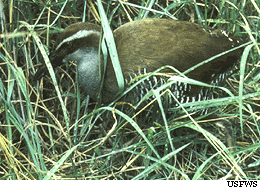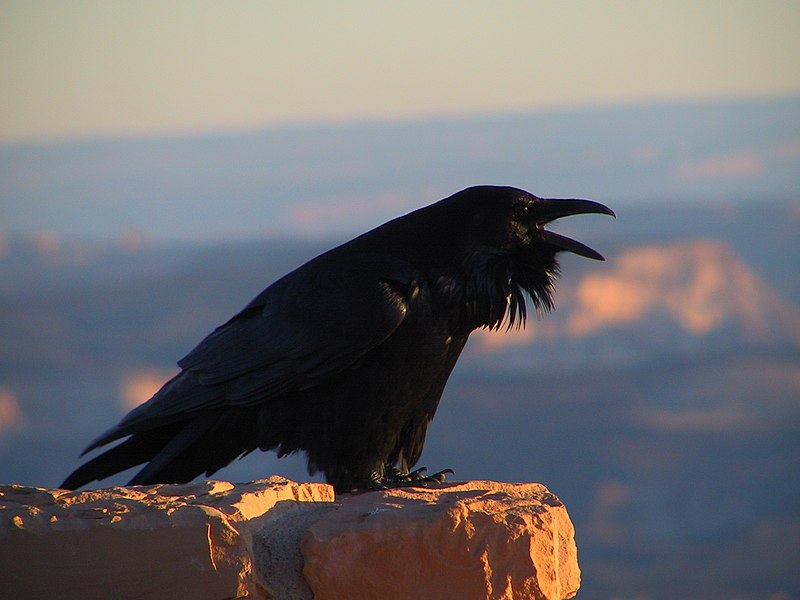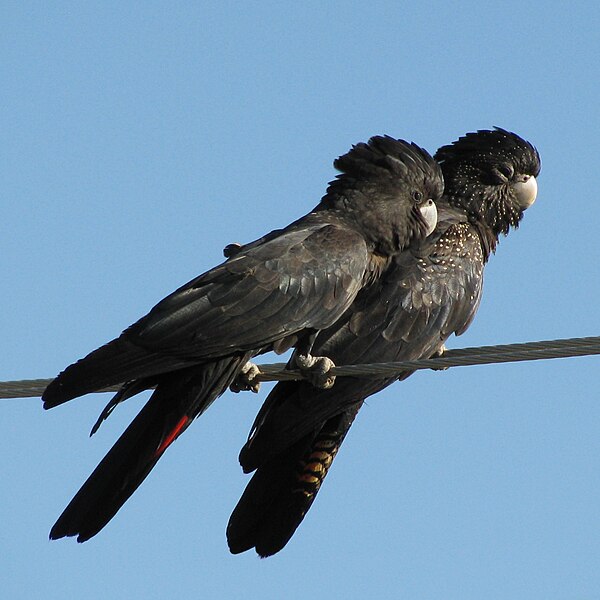The bonds formed between mated pairs of parrots are among the strongest known in the animal kingdom. In most species, paired parrots spend a great deal of time in actual physical contact with their mate, and cooperate in nest-building, rearing the young, defending their territory and all other daily activities. When I observe parrots in the wild, be they monk parrots in NYC or scarlet macaws in Venezuela, I am always struck by how easy it was to identify paired birds amidst large flocks. Even in flight, mated birds of many species align themselves close to one another.
Bonding as a Training Aid
The instinct to bond renders parrots at once both ideal and difficult pets. A parrot that chooses you as a “mate” will become quite attached and affectionate, in a way matched by few other pets. The need to bond explains why single birds are usually easier to train than those kept in pairs.
The Time Factor
If you do not spend significant time interacting with a bonded bird, boredom and behavioral problems (screaming, feather plucking, etc.) will be inevitable. “Significant time” must be measured in light of the parrot’s natural behavior, which dictates that it be in close contact with its mate nearly always; an hour or two juggled among your busy schedule is not sufficient.
Aggression
Problems can arise even if you can spend a great deal of time with your pet. Once bonded, parrots usually become quite territorial, defending not only their “mate” but also their living area. The concept of “territory” varies greatly among individuals, and may extend to their cage, a room, or the entire house.
The parrot may become very aggressive towards other people, threatening them or attacking if possible. In some cases, parrots may exhibit particularly strong responses to a particular person, i.e. one who enters their territory frequently or who is viewed as a threat to their “mate”.
Avoiding Bonding-Related Problems
The most effective way of preventing aggression related to bonding is to expose the parrot to all household members early in life. Ideally, each person should spend an equal amount of time caring for or interacting with the parrot. Even in this scenario, however, hormonal changes as the bird matures may affect its behavior, so it is important that you observe your bird’s behavior carefully and plan accordingly.
Further Reading
A large colony of feral monk parrots lives on the grounds of Brooklyn College in NYC. You can read about an interesting research project focusing on pair bonding at
http://academic.brooklyn.cuny.edu/education/miele/census.htm.
Image referenced from Morguefile and posted by Evildrjeff.
 That Bird Blog – Bird Care and History for Pet Birds
That Bird Blog – Bird Care and History for Pet Birds

 Attention to breeding birds in public and private collections, along with increased legal protection, has helped a great many species to recover from earlier population crashes. In some instances, rescue efforts represent the only hope for a species, as none survive in the wild. However, upon reviewing species status reports recently, I was dismayed to see that bad as opposed to good news prevailed. From well known pet trade parrots to recently described Asian swallows, wild birds everywhere face grave threats.
Attention to breeding birds in public and private collections, along with increased legal protection, has helped a great many species to recover from earlier population crashes. In some instances, rescue efforts represent the only hope for a species, as none survive in the wild. However, upon reviewing species status reports recently, I was dismayed to see that bad as opposed to good news prevailed. From well known pet trade parrots to recently described Asian swallows, wild birds everywhere face grave threats. Indo-Malayan birds, Asian vultures and albatrosses face particularly hard times, with many species in severe decline.
Indo-Malayan birds, Asian vultures and albatrosses face particularly hard times, with many species in severe decline. In the Oxford University experiment, 5 New Caledonian crows were presented with a series of tools, some of which were out of reach, and an unreachable food item. All five crows figured out the dilemma in sort order – four on the very first try.
In the Oxford University experiment, 5 New Caledonian crows were presented with a series of tools, some of which were out of reach, and an unreachable food item. All five crows figured out the dilemma in sort order – four on the very first try. Of course we all have our parrot stories…please write in with some that might compete with these crows!
Of course we all have our parrot stories…please write in with some that might compete with these crows! I’ll start off with my favorite. The original species name, “magnificus”, was truly fitting. Males are jet black with brilliant red tail patches; females have a brownish cast to the plumage and their tails bear orange-yellow bands. The contrast of these colors against one another is quite striking – you will not soon forget your first look at this bird.
I’ll start off with my favorite. The original species name, “magnificus”, was truly fitting. Males are jet black with brilliant red tail patches; females have a brownish cast to the plumage and their tails bear orange-yellow bands. The contrast of these colors against one another is quite striking – you will not soon forget your first look at this bird. Two subspecies of this impressive bird (recently considered species by some authorities), aptly named the yellow-tailed black cockatoo and the white-tailed black cockatoo, inhabit widely separated regions of coastal southeastern and southwestern Australia. Their habitats vary as well, with the yellow tailed subspecies being restricted to wet woodlands and the white tailed black cockatoo favoring dry scrubland.
Two subspecies of this impressive bird (recently considered species by some authorities), aptly named the yellow-tailed black cockatoo and the white-tailed black cockatoo, inhabit widely separated regions of coastal southeastern and southwestern Australia. Their habitats vary as well, with the yellow tailed subspecies being restricted to wet woodlands and the white tailed black cockatoo favoring dry scrubland.